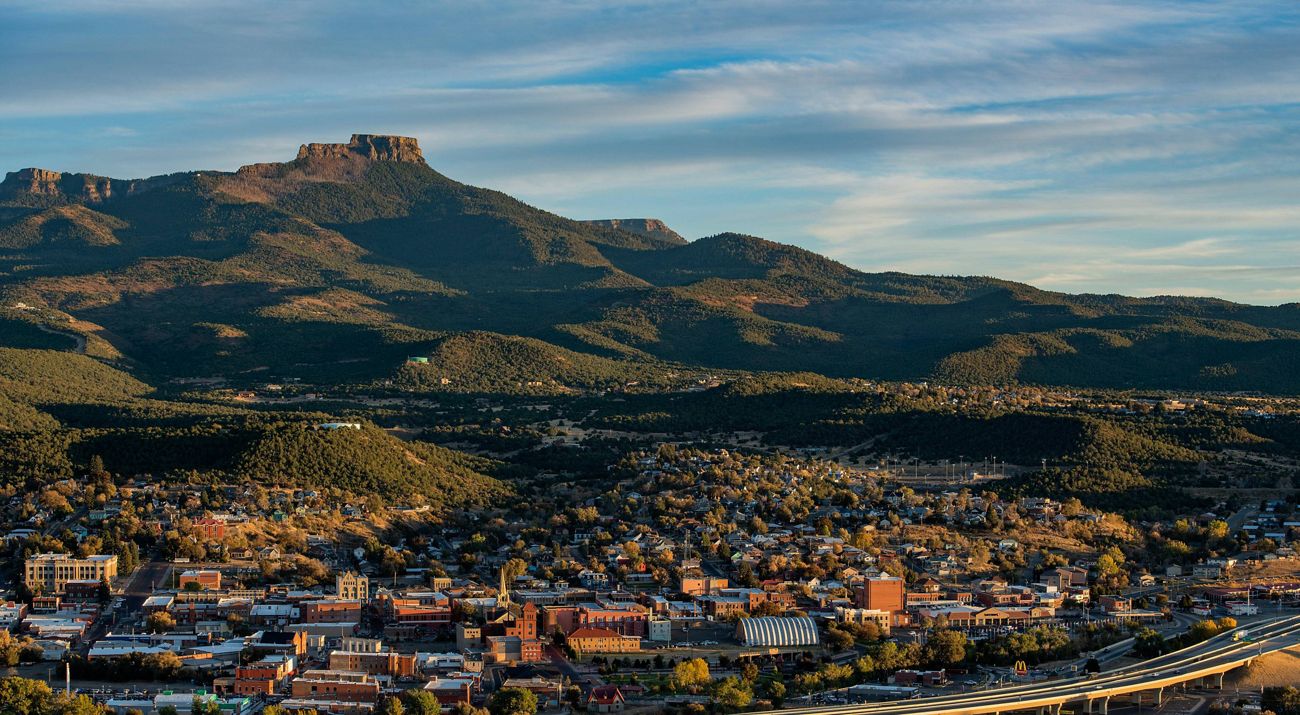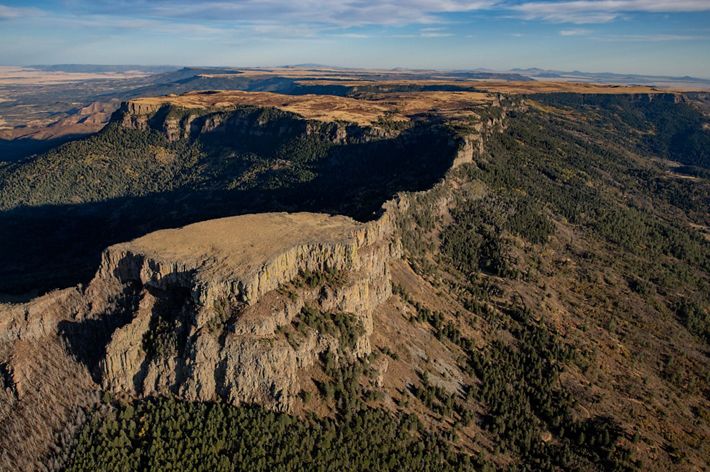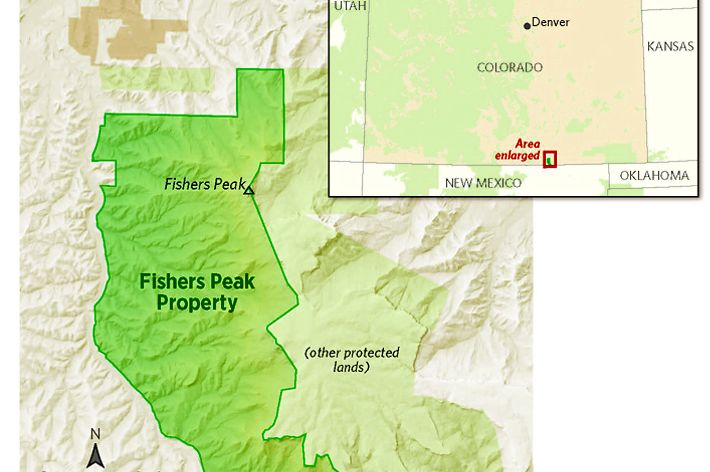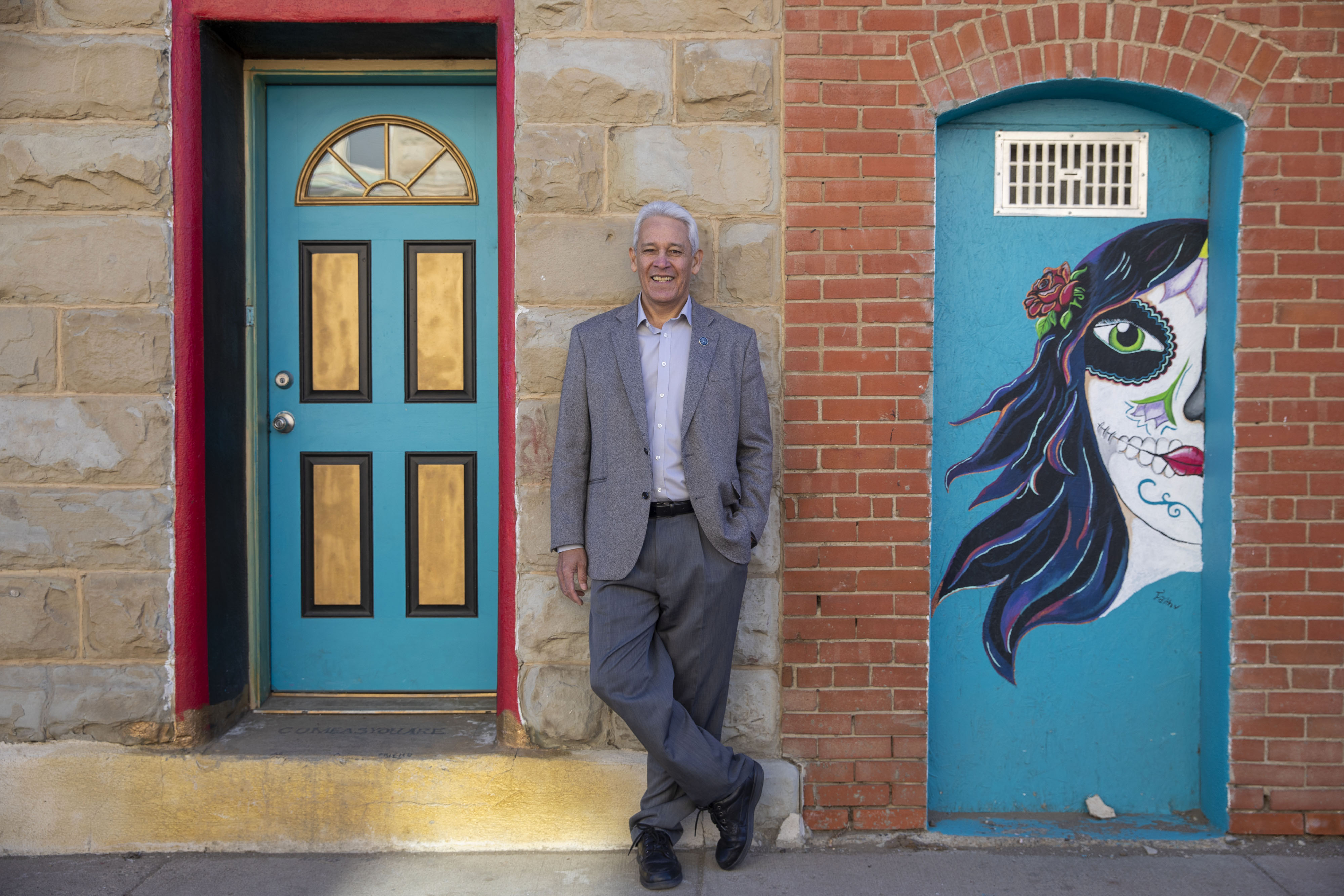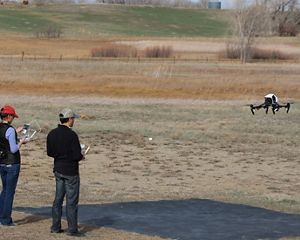Park + Town
Trinidad finds new economic opportunity in outdoor recreation thanks to Colorado's newest state park.
Summer 2020
Crystal Dreiling has a name for her favorite corner of the Crazy French Ranch, just south of Trinidad, Colorado: The Flats. It’s an open meadow hemmed in by twisted oak and loomed over by the sheer gray cliffs of Fishers Peak. On an early winter afternoon, elk had stamped prints in a muddy path. In spring, a clear stream slakes a field of wildflowers.
The place has particular significance for Dreiling because when it opens as part of Colorado’s newest state park, she will be the first Colorado Parks and Wildlife ranger to oversee it.
Get the magazine
Become a member of The Nature Conservancy and you'll receive the quarterly print magazine.
Subscribe now“I was ecstatic,” she says of the appointment. “It’s a once-in-a-lifetime opportunity for a park ranger.” But she knows it means even more to the people of Trinidad, who have only been able to gaze up at the property and its imposing mountain.
The defining feature of the new park, Fishers Peak is a broad-shouldered, 9,633-foot-tall mesa with a top as flat as a platoon sergeant’s head and a profile as iconic as they come. It stands 3,500 feet above the town of Trinidad, just north of the New Mexico border, and locals will proudly tell you it’s one of the highest points east of the Rocky Mountains. Its image hangs in nearly every bar in town, but few have set foot upon Fishers Peak because, until recently, the 30-square-mile ranch encompassing it was private property.
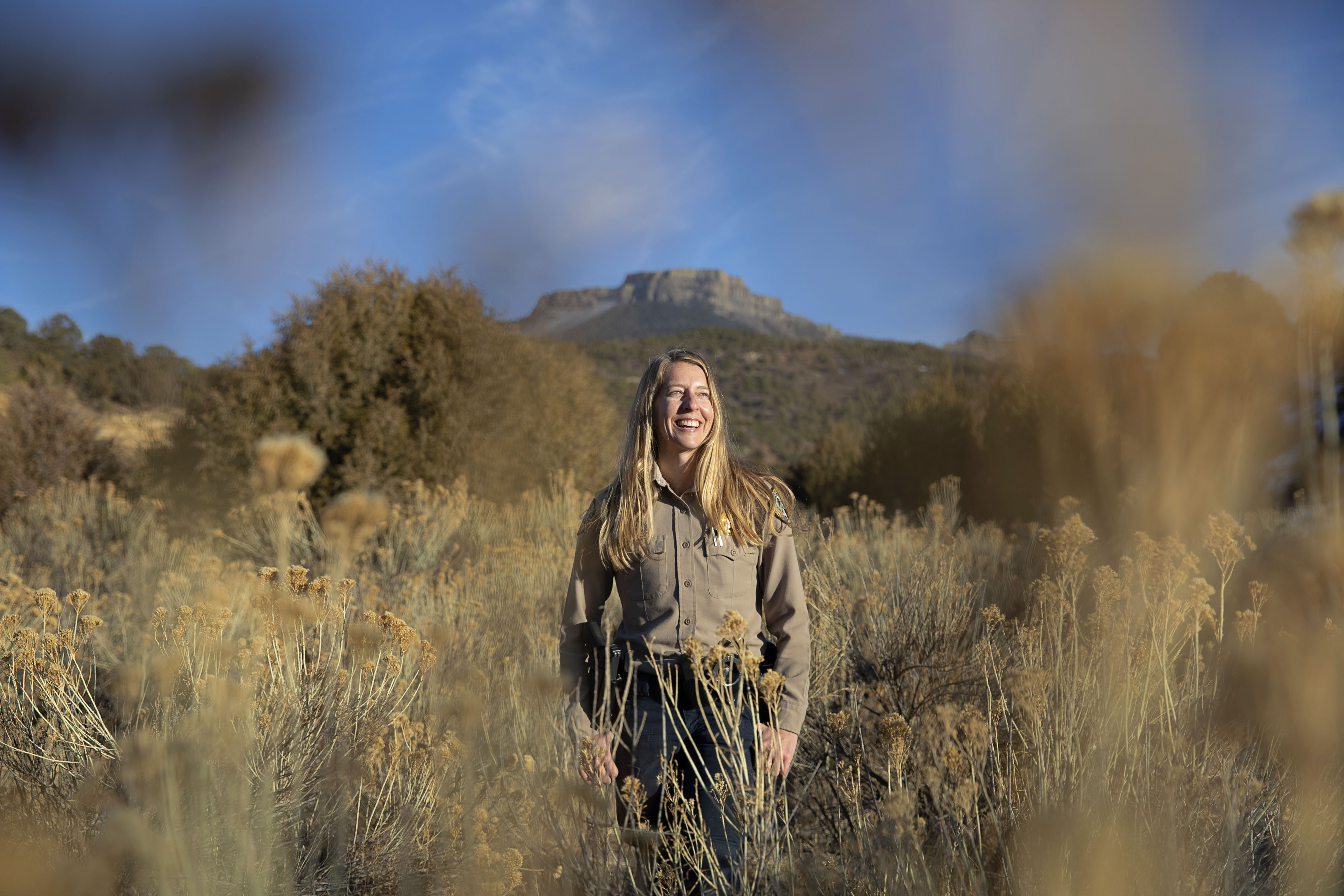
Crystal Dreiling
“People here think of Fishers Peak as part of their property,” says Crystal Dreiling, who will serve as the new park’s first manager and is currently the manager of Trinidad Lake State Park. She describes Trinidad as a close-knit community, home to families who have lived in the mountain's shadow for generations. She hopes Trinidad can grow while maintaining its charm.
Creating Colorado’s newest state park
Things began to change in the fall of 2017, when Trinidad called on The Nature Conservancy and the Trust for Public Land (TPL) for help. The new mayor and other leaders had a vision to remake the town as a thriving recreation hub, and conservationists had long sought a continuous wildlife corridor from the Sangre de Cristo Mountains to the scoured plains of Oklahoma. The ranch, which had been on the market for years, was central to both ambitions.
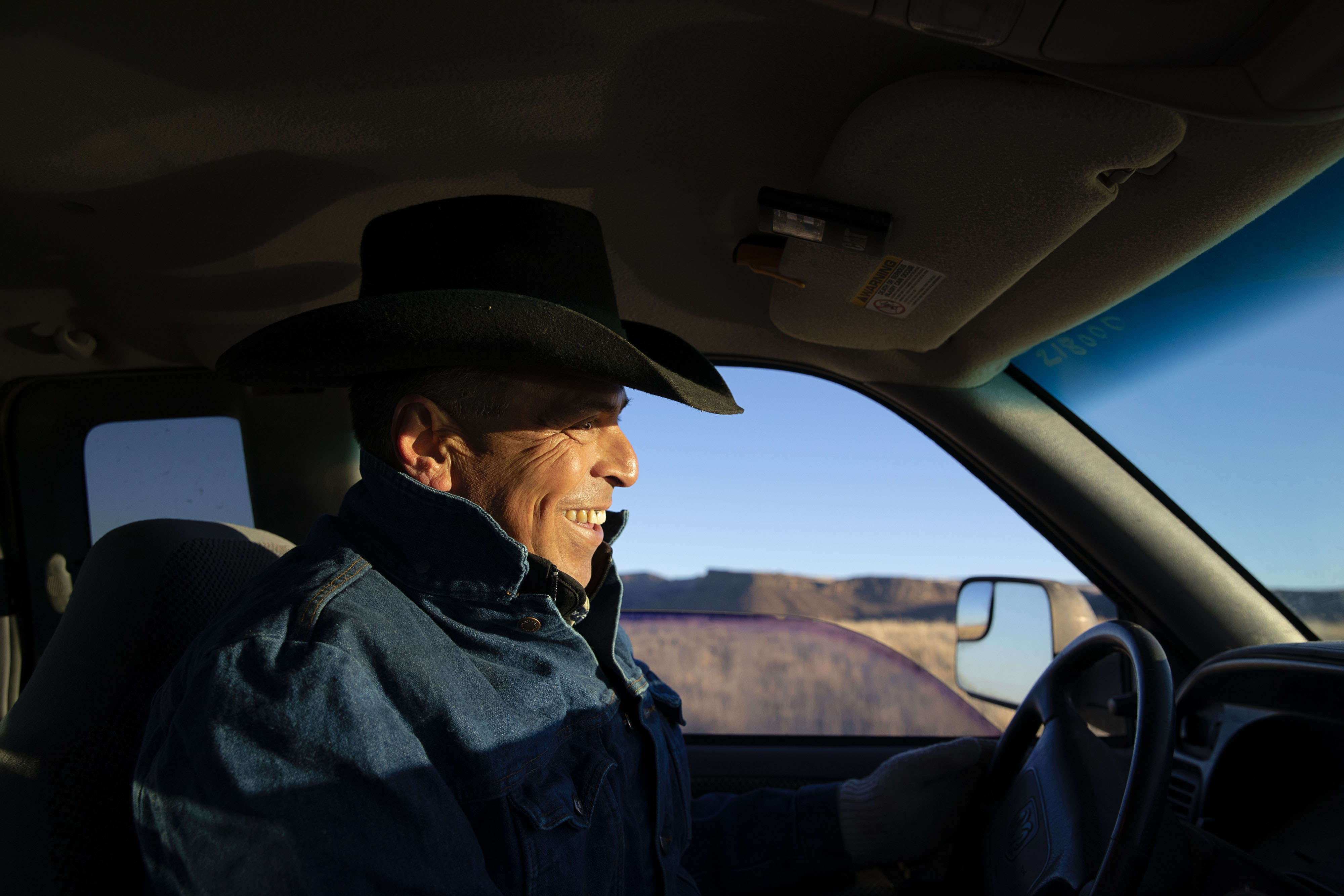
Troy Velarde
“Everybody needs to see the top of the peak at least once,” says Troy Velarde, who managed the Crazy French Ranch before the purchase and continues to manage the property. He led horseback tours of the mountain when it was private land and oversaw the 300 or so cows that grazed its flanks each summer. “People are chomping at the bit to use the trails.”
That February, TNC and TPL purchased the property for $25.4 million. Eight months later and with help from Colorado Parks and Wildlife, as well as Great Outdoors Colorado—a trust fund that invests a portion of Colorado Lottery money in state parks and outdoor spaces—Governor Jared Polis announced that it would become Colorado’s 42nd state park. Suddenly, a mountain whose local value for generations had been little more than a background aesthetic has become the centerpiece of an effort to save a town and preserve its landscape.
The property sits where the mountains meet the plains—an alluring location for both humans and wildlife. TNC has invested heavily in southern Colorado, purchasing properties like the Baca Ranch northwest of Trinidad, to protect a migration corridor critical for elk, bears and cougars. The addition of Crazy French Ranch places a 19,200-acre piece in a puzzle that will amount to just over 55 square miles of protected public land.
Fishers Peak blends conservation and recreation to build an economy
With Fishers Peak and its surrounding lands permanently protected, conservationists will be closer to realizing their long-held dream of a largely continuous wildlife landscape from the Rocky Mountains of Wyoming south and east to the plains of Oklahoma.
For Trinidad, the goal is to harness the exploding outdoor recreation industry, which contributes $62 billion to the state annually, and deliver itself from economic insecurity. The brick and stone outpost sits northwest of the peak, just above Raton Pass on the storied Santa Fe Trail. Wyatt Earp came through here; so did Billy the Kid. And when striking miners took on John D. Rockefeller’s Colorado Fuel and Iron Company in 1913, in what became known as the Colorado Coalfield War, the railway through Trinidad was a strategic location for both the miners and the Colorado National Guard.
Phil Rico
At the time Mayor Phil Rico came into office as mayor, people were worried, he says, because the town of Trinidad was losing many young residents. The marijuana industry had brought revenue but not a sense of unity for the townspeople, and he hopes the new park will help turn things around. “We need to grow,” he says. “We either change with the times or we die.”
The town has ridden many booms—cattle, coal, oil and gas—and weathered just as many busts. Since 2000, with the gas market slipping, its population has dropped by about 10%. “The city was flat, it had no vision and was losing a lot of young people” in recent years, says Mayor Phil Rico.
Seeking the next sure thing, Trinidad bought into recreational marijuana when it was made legal in Colorado in 2014, and these days, instead of cattle rustlers haunting its streets, retired New Mexicans and Texans drop by for grass. There are more than 20 dispensaries in a town of about 8,000 people, and the industry provides about 400 jobs.
Taxes on sales account for a quarter of the city’s annual revenue. But Trinidadians know a good thing won’t last.
“We’ve always relied on the coal and gas industries. That’s been up and down, and now we don’t have coal, [and] the gas industry is on hold. We need to diversify into a good, clean industry,” says Rico, who can see the writing on the wall. New Mexico decriminalized pot in 2019, around the same time Texas let out the leash for medical users. It is only a matter of time before those states go fully legal and this town’s shops go quiet.
Wade Shelton
“This is a community that needed this level of public investment for decades and didn’t get it,” says Wade Shelton, senior project manager at the Trust for Public Land. Now, park managers are looking at how Fishers Peak can provide a model for tapping into interest in outdoor recreation while bringing the most economic benefit to local businesses. “We want corridors for wildlife, but we want corridors for people, too,” he says. With careful planning, he expects the new park to provide both.
Despite the economic boom, some locals feel that the good times incurred a cost. The town originally intended to license five stores, “but the city let them all through. Now it’s like a stinkin’ mall. Pot shop to pot shop to pot shop,” says Nicole Paradisa, the 29-year-old owner of Colie’s Cakes & Pastries. A Trinidad native, she opened a business on Commercial Street to supply her neighbors with the treats her family has baked here for four generations. “I’m so excited for the park. Even walking to the bank I can see the peak,” she says.
Like others, Paradisa is optimistic that recreation will do for Trinidad what it has done for places like Fruita, a small Colorado farming town turned mountain biking mecca replete with vibrant breweries, bike shops and breakfast cafes.
“This community has been starving for this kind of public investment,” says Wade Shelton of TPL. The task before the coalition is to create lucrative recreational opportunities while preserving the healthy habitat draped across Fishers’ flanks.
In this, the park is uniquely positioned.
Land managers rarely have the opportunity to plan for recreation and conservation in tandem, says Matt Moorhead, who directs conservation partnerships for TNC in Colorado. “Here, we have a blank slate. We can plan and adapt to meet conservation goals.”
Planners are working hard to ensure that trails skirt around sensitive habitat, and they hope to concentrate recreation on the northern side of the property, while leaving the more unspoiled southern section nearly pristine. Moorhead hopes the steps taken here will provide a template for designing recreation that works in concert with conservation.
Scientists and residents plan—and hope—for the future
The last significant use of Fishers Peak ended in the early 20th century, and since then the land has been used only for grazing and hunting. Below the iconic peak, there are miles of pinyon-pine habitat and forgotten stands where Gambel oak have stood for 300 years. For TNC senior conservation ecologist Chris Pague, the unknowns are wildly exciting. “It’s truly a mixed conifer forest,” he says, and ecologists have differing opinions about how to manage such a complex mosaic of mixed conifers.
To fill in the gaps and inform plans, Pague and his team, which includes volunteer experts, are cataloging everything growing in or moving through the scrubby, rocky property. There are elk and deer, peregrine falcons and eagles, flammulated owls and New Mexico meadow jumping mice, American hognose skunks (which hadn’t been seen for decades in Colorado) and four forms of butterfly that live nowhere else in the world (read more about the wildlife on the property here). On the upper mesas, which have just been lightly grazed, the only scars are from lightning strikes.
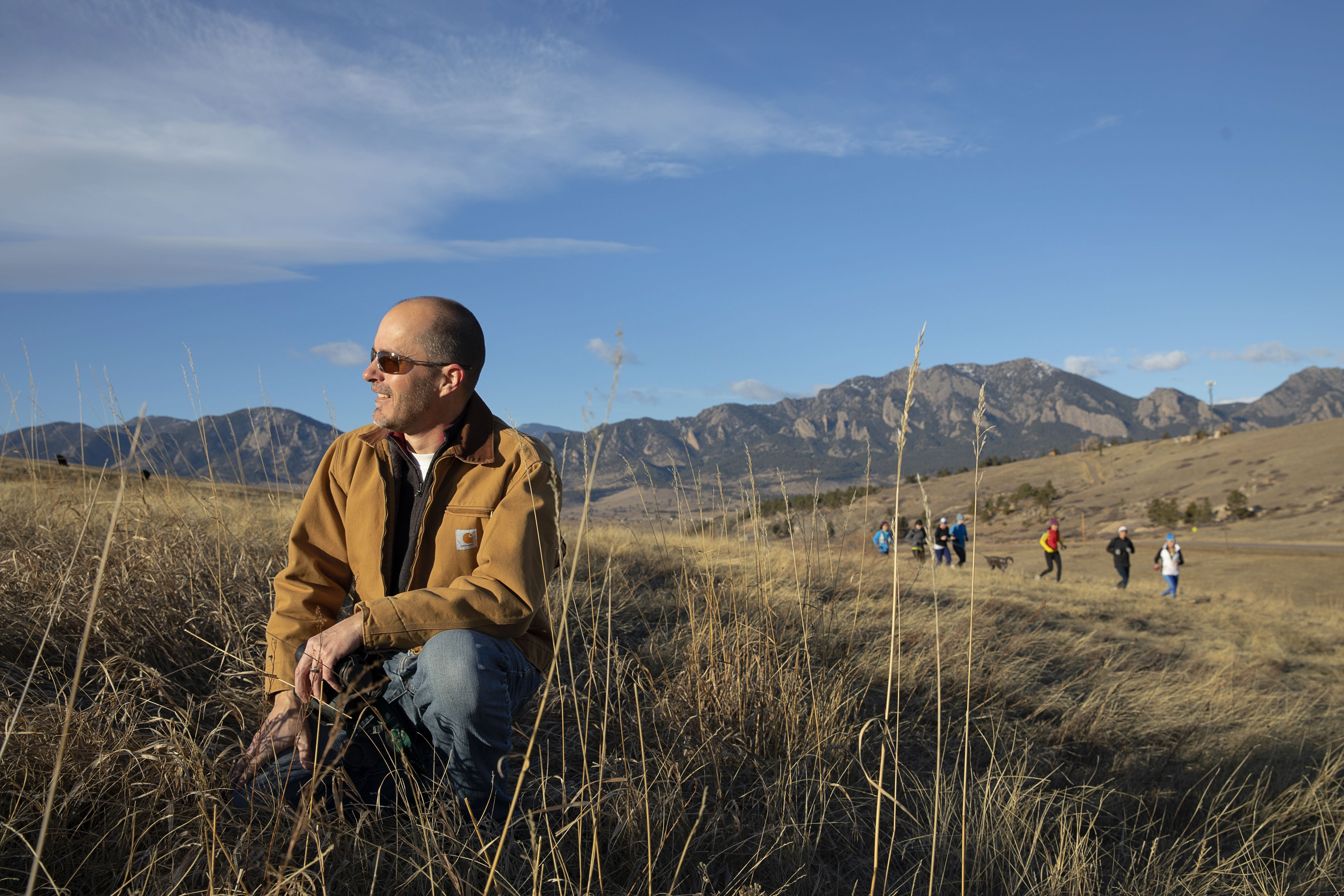
Matt Moorhead
“Trinidad sits at an important intersection of Old West history,” along the Santa Fe Trail, says Matt Moorhead. But the town aims to be part of a vibrant future for conservation. With the mountain protected, efforts are another step closer to a connected conservation landscape from the peaks of the Sangre de Cristo Mountains to the wide open plains of Oklahoma.
Given climate scenarios, Pague says, the park is an even more important linkage. The heat, drought and extreme weather in store for the West as a result of climate change could push flora and fauna north out of the desert and uphill from lowlands. “The biodiversity will either need to find refuge or a path to a place that is a refuge,” he says, and Fishers Peak may provide both.
In town, behind the Old West facades, residents anxiously await the park’s opening, which could happen in 2021. When asked what they envision for the property, they suggest campgrounds, picnic spots, a visitors center and perhaps even a zip line. But locals are also resolute in appeals that the land remain as undisturbed as possible. History has held Fishers Peak intact through so many turbulent years, and they intend to keep it that way.
Get the Magazine
Become a member of The Nature Conservancy and you'll receive the quarterly print magazine
Subscribe now